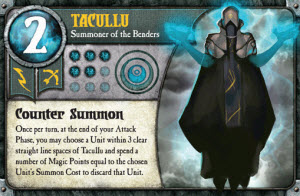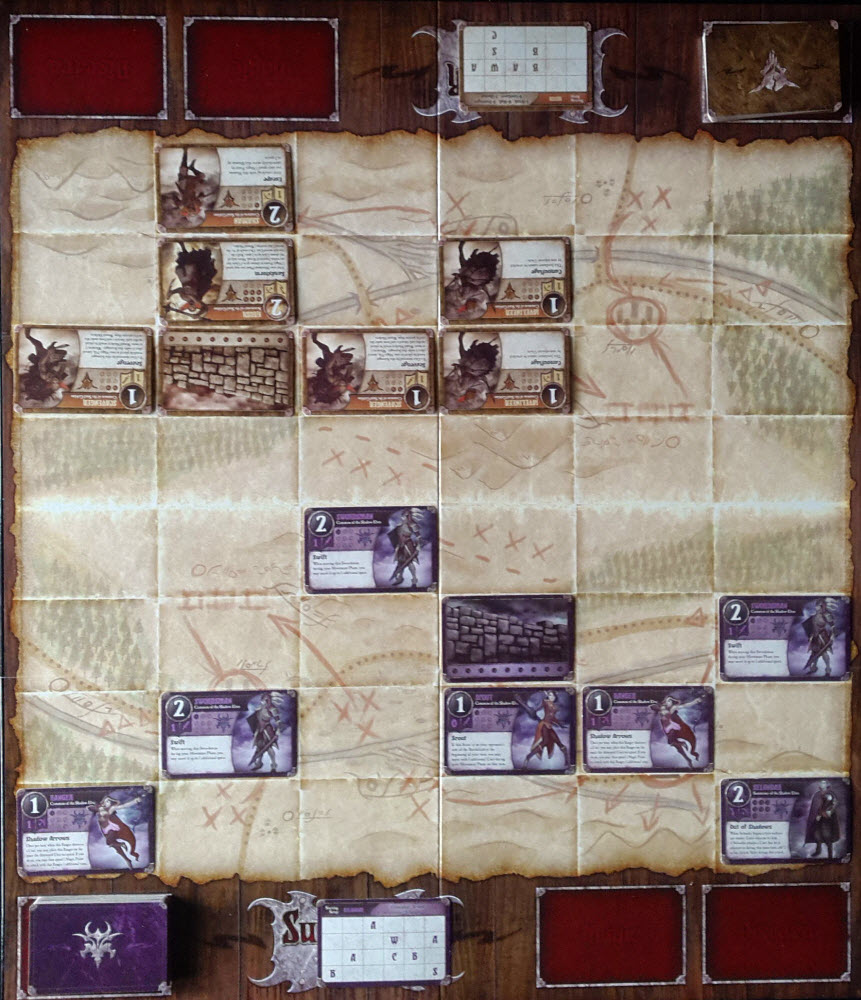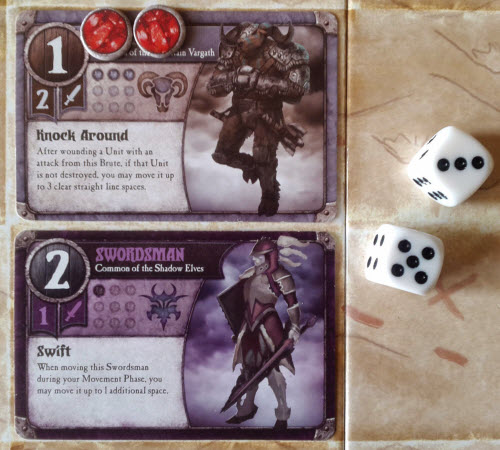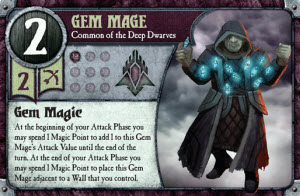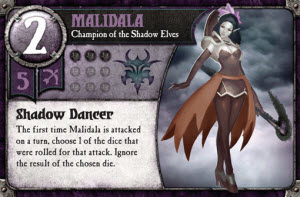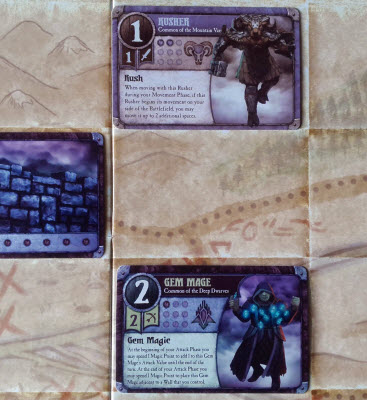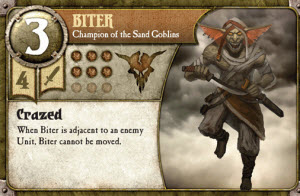Degon Hal never understood politics, but he was good at smashing faces. Still, as he stood atop the hillside, wind whipping through the formation lines, he couldn’t help but wonder what the point was. Ever since his glorious khan found one of those magical stones, his bloodthirst became even thirstier. Degon was sure his tribe would’ve gone after the tyrant Ret-Talus, who plundered their land for decades, but instead here he was, about to crack skulls again with their neighboring swamp orcs. Degon was sure he was missing something; he trusted in his khan. He had no reason not to.
As the clarion call to advance went out, Degon shrugged off the notion, his thoughts shifting to whether he wanted any more orc finger necklaces. No, Degon Hal wasn’t very good at politics. But he was good at smashing faces…
The Premise
The land of Itharia has been in turmoil for centuries, long at the mercy of an evil archmage bestowed with the immense power of a Summoning Stone. The good news is that more Summoning Stones have been found, imbuing others with powers that could rival their common foe. The bad news is that it didn’t happen, and Itharia has splintered into a free-for-all of power and control. Players are one of these Summoners, hellbent on destroying their opposition and leading the charge into battle. It would appear that for Itharia, things are only going to get worse before they get better.
The Rules
Summoner Wars is a tactical card game between warring factions, played out on an 8×6 grid battlefield board. Each faction deck varies in terms of its strengths and strategies, but they all consist of three unit types: Common units, more powerful Champions, and most importantly, the faction’s Summoner. In addition, each deck contains a number of one-shot Event cards, as well as special Wall cards that are placed on the board to summon units.
Players begin by selecting a faction to use, and each faction will start with a unique layout of units already on the battlefield. The remaining faction cards are shuffled and become that player’s deck. The starting player is determined randomly.
Summoner Wars takes place over a series of turns, each broken down into six brief phases: Draw, Summon, Events, Movement, Attack, and Build Magic. Players proceed through each phase, with the exception of starting player’s first turn wherein they skip right to Movement.
In the Draw phase, the player draws until they have five cards. Then, in Summoning, they recruit units from their hand by paying the unit’s Summon cost in Magic Points and placing it adjacent to one of their Walls. Each unit in the game comes with its own attack values, hit points, and special abilities. Magic Points consist of cards put into a player’s Magic pile, which begins the game empty.
Next, the player may next use one or more Event cards. However, unlike units, Event cards have no cost and are discarded after use. This is followed by Movement, where the player may move up to three units up to two spaces each, but units cannot move through other units and cannot share spaces.
Combat works similarly, where the player may attack with up to three separate units. Attacks in Summoner Wars are either melee or ranged. Melee attacks must be adjacent to the other unit, while ranged units can fire up to three spaces away in a straight line. However, ranged attackers can’t fire through other units or Walls.
Summoner Wars uses dice-based combat. When a unit attacks, the player rolls a number of six-sided dice equal to the attack value. Results of three or higher are hits, and the defender takes damage. Whenever a unit takes damage equal to its hit points, it dies. The player who destroyed it adds that card to their Magic Pile – one of the two ways to generate Magic Points.
The other is via the Build Magic phase. Here, the player may put any number of cards from their hand into their Magic Pile. Once done, it is the next player’s turn.
Players engage in this back and forth battle until one player kills the other’s Summoner. We imagine the result is some sort of Megaman / Highlander type effect, where the winner is magically imbued with even more strength to fight their enemies. Everyone else is, well, dead.
Tribal Warfare
From the onset, it’s evident one of the most notable things about Summoner Wars is the variety to the faction decks. The Master Set, which is paradoxically both a standalone expansion and recommended starting point, contains six very different factions.
From desert goblins to psychic rangers to vampire-like elves, every faction is distinctive and unique. Each offers distinctly different tactical options as you’re trying to remove your enemy’s head. For instance, one faction focuses on close combat as its strength. Another group makes heavy use of Magic Points for its special abilities. All factions come with their own advantages and disadvantages, but while some factions will fare better against one group over another, any of them has an equal chance to win.
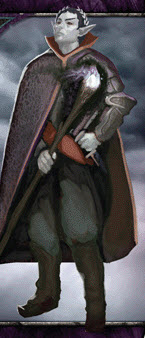 More importantly, they all have unique flavor and identity, and it is here where you experience the game’s spirit most. Here Shadow Elves feel like Shadow Elves. The theme to Summoner Wars is otherwise pretty surface-laden, with little in-game references or depth to explain the larger conflict, but the wide variety to its clans is easily the game’s best asset.
More importantly, they all have unique flavor and identity, and it is here where you experience the game’s spirit most. Here Shadow Elves feel like Shadow Elves. The theme to Summoner Wars is otherwise pretty surface-laden, with little in-game references or depth to explain the larger conflict, but the wide variety to its clans is easily the game’s best asset.
That said, Immersionists may have a hard time latching on to this combat game. Each faction is very distinctive, but outside of their cohesive abilities and playstyles, the game doesn’t exude any real worldbuilding theme.
The Ol’ Lucky Two-Step
Tactical games by their nature present the idea that players have unilateral control over the game. It’s a perception given off by classical low-luck games like Chess. Yet most games have some degree of luck to them. Including randomness to a game ultimately serve two purposes: determining a player’s choices and determining the outcome of events. Determining choices is highly useful for a game’s replay value, as it keeps them from becoming repetitive or stale. Whether it’s dictating which resources are available or which goals are in effect, luck increases a game’s variability and lets (or forces) players to work within those limitations to make strategic decisions.
At the other end of the spectrum is where luck randomly determines if an action succeeds, such as attacking another player or taking a specific action. You know, roll a die and see what happens. On the one hand, this increases how swingy a game is, as a series of dice rolls can put someone far ahead or cause a player’s death. On the other hand, it’s also the great equalizer, as it can just as easily bring a frontrunner back in line or let someone who has fallen behind catch up. But it’s also harder to strategically plan around.
Summoner Wars has luck on both ends. Yet what makes the game intriguing is how it controls it. For starters, even with a 34 card deck – minus whatever starts on the battlefield – you’re still playing a card game. Card games always have to deal with luck of the draw, but with the ability to channel less ideal cards into Magic Points, Summoner Wars heavily offsets this being an issue. You rarely feel stuck with bad cards, for you can always take advantage of turn poor draws by converting them into Magic Points and letting you dig for more desirable cards at the same time. This adds a layer of decision-making to an otherwise combat-centric game, forcing you to make calculated choices on what to hold and what to get rid of in the heat of battle.
Luck in Summoner Wars is more heavily felt on the battlefield. In combat, dice rolls can just as easily put you on your heels as they can rout your opponent. The game tries to downplay that some a couple ways. First, it’s all offense. There are few defensive cards, and the odds are 2:1 that you are going to roll a hit. Summoning units with higher attack values increases your chances of favorable outcomes even further.
Assume that most of your rolls will be hits, and the game’s focus shifts back towards tactical maneuvering. With evenly matched teams, luck isn’t the sole determining factor, but, yes, there can be times when your opponent’s archer goes all Legolas on your troops and you can’t even hit your own feet.
Thus, Summoner Wars makes for a tactical game with a fair amount of deterministic luck to it. However, between the game’s moderate play time and offsetting randomness with shrewd calculations, Tacticians should still appreciate the depth of turn-based planning and the cat-and-mouse style maneuvering that the game offers. Strikers will have similar thoughts: they’ll appreciate that most playthroughs aren’t incredibly long and the game the singular objective to kill the Summoner. Still, the game can sour for both groups in the long run if too many games are won because of one-sided dice rolls.
For the opposite reasons, Daredevils will also particularly enjoy Summoner Wars. This group normally eschews games that reward purely logical decisions over risky ventures and eccentric strategies, and at first glance Summoner Wars follows suit. However, as history shows, risky battlefield gambles can occasionally pay off. They’ll appreciate that stockpiling Magic Points for an early-game Champion or waltzing up to a unit deep in enemy territory to land a lucky blow are possible. Case in point: in Summoner Wars not only can you purposely kill your own units – sometimes it’s the right move to make. That’s about as Daredevil friendly as it gets.
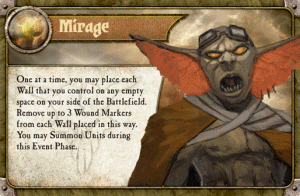
“Uh, boss, did that Wall just move?”
Standing on the sidelines of this battle, though, will be Socializers and Architects. Sessions of Summoner Wars last less than an hour, and it’s remarkably quick to pick up for a game about weighted battlefield decisions, but it still requires a more than a modicum of focus and planning. At the same time, there is nothing to explore or accumulate in Summoner Wars (besides the bones of your enemies), making it an easy choice for Architects to pass on.
The Enemy of My Enemy
Summoner Wars further increases its longevity value with deck customization and player expansion. However, you won’t be able to fully take advantage of the game’s LCG-like capabilities with the Master Set alone, as you aren’t given any cards to do so.
Similarly, while Summoner Wars its a very cohesive two-player game, it can expand up to four by acquiring additional board (or at least a nice big piece of paper). The rules change slightly, and it makes for a slightly longer affair, but the overall vibe remains the same. The main benefit to adding extra players is exploring the fun dynamics that occur with teamed factions squaring off against one another. Deck pairings interact in ways that range from highly symbiotic to down right quirky, which certainly adds to the game’s replayability.
The Takeaway
Regardless of which power-hungry faction you play, Summoner Wars surprisingly proves both accessible and strategic. The game sufficiently blends skillful, tactical battle decisions with a healthy dose of mitigated luck, as both play an active role in who survives. For some, the dice-based combat will make the games outcomes too random, while others will enjoy that regardless of a player’s experience level, anyone is capable of winning. The game’s one notable fault is that the cards can wear easily, so sleeving may be a long-term requirement. Nevertheless, the game easily holds players’ attention as it moves along briskly with unencumbered rules and quick turns. When combined with the wide variety and inherent differences of the faction’s play styles, Summoner Wars makes each session feel like a snapshot skirmish of a larger war. And it’s turns out to be a war worth fighting.
Summoner Wars: Master Set is a product of Plaid Hat Games.
Cardboard Republic Snapshot Scoring (Based on scale of 5):
Artwork: 4
Rules Clarity: 4.5
Replay Value: 4.5
Physical Quality: 3.5
Overall Score: 4

